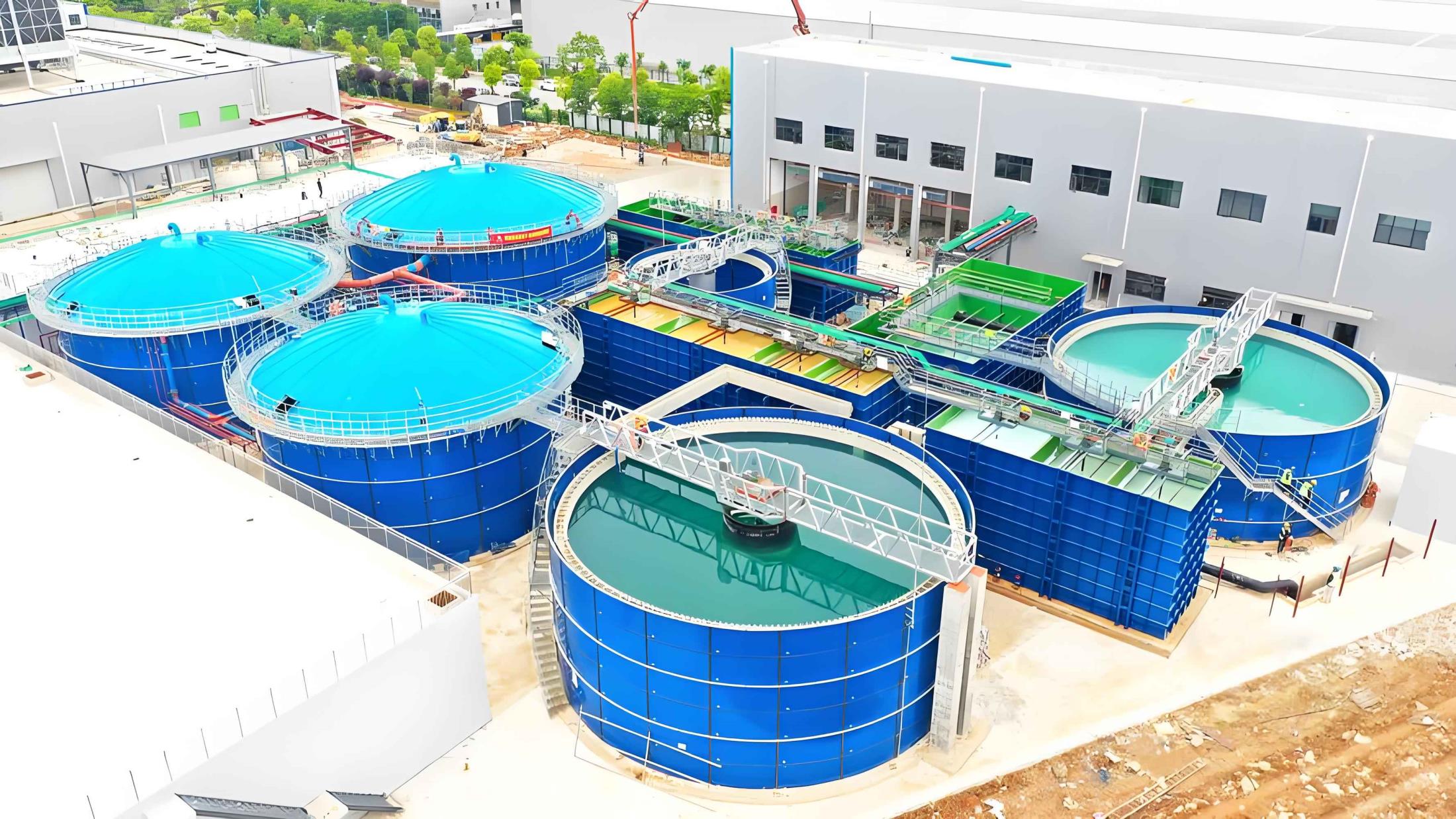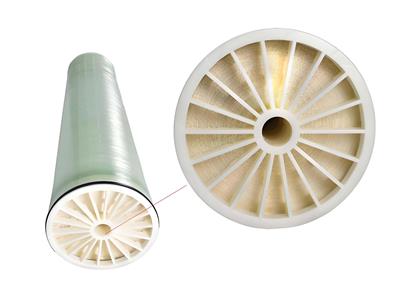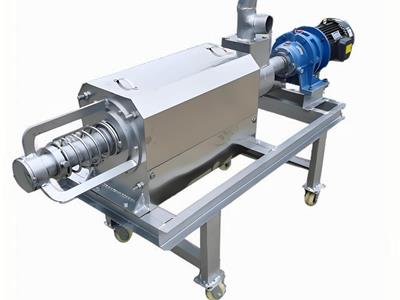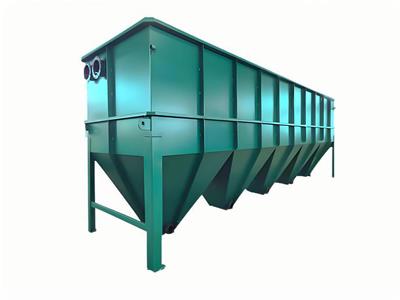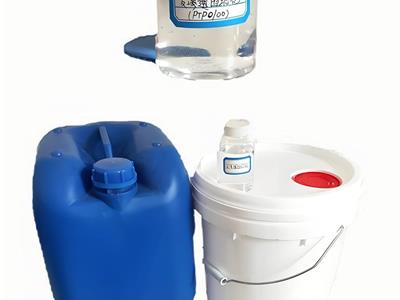- 2025-07-14
Customized water treatment projects
Custom Water Treatment Systems
We understand that in most cases, a standardized water treatment system will not solve all of our customers’ problems. That’s why we use the expertise of our engineering team to design tailor-made solutions to address the unique water quality issues in any application.
Whether it’s a size compatibility issue or a certain contaminant, we have the experience and track record to solve all your problems with water treatment systems. The following information will help you understand some of the specific challenges we have addressed and solved:
Water treatment problems that have been successfully solved:
Sedimentation
Oil, chemicals or grease
Temperature
pH
Erosion
Toxic and biohazardous substances
Waste
Pesticides
Decomposed organic matter
FupengWater, as a global custom water treatment system supplier, has over 20 years of experience, providing pre-engineered and custom purification systems for the water treatment industry. These water treatment systems are individually designed to meet the specific needs and specifications of any application.
FupengWater’s team of engineers designs complete water treatment plants from raw water intake to finished water distribution and building regulations. Applications include brackish water, surface water treatment, and desalination for industrial and commercial purposes. The final output is pure drinking water.
All systems are designed and manufactured at our facility in China.
FupengWater custom designs and manufactures integrated industrial water treatment plants for desalination, brackish water purification, and surface water purification.
Features and Benefits
By purchasing engineered components from FupengWater, you gain the following benefits:
Dual Pass RO
RO/EDI
High Brine RO
Membrane Softening
Nanofiltration
Ultrafiltration
Nitrate Removal from Water
RO Pretreatment
Custom Water Generators
No operator training required – your operators are already familiar with the components and maintenance procedures
Reliable service as all components are durable and designed for long-term, economical operation
Quick start-up and long-term operation with high-quality components and a complete documentation package
What’s included in the budget quote:
Process and Instrumentation Diagram (P&ID)
Common Footprint
Engineering Documents
FupengWater uses a skid-mounted system. The system is easy to install and maintain.
Deliverables include:
3D drawings of the general arrangement of all systems
3D drawings of the general layout of the plant with interconnecting piping
Plant and system layout in 2D CAD
Electrical drawings
Building specifications and loads
Commissioning
Training of personnel
Technical manuals
Installation/operation/maintenance manuals
Q&A
What is the process of water purification?
FupengWater's team of engineers works around the clock to remove bacteria, viruses and other micro-pollutants from your drinking water. Our water purification system treatment process begins at our manufacturing site. Here, we build reverse osmosis systems designed to remove sediment and particles from unfiltered water such as seawater, brackish water or tap water. These systems combine chemicals such as chlorine to dissolve heavy metals into a physical structure that allows the filter to penetrate the water. The final output is pure drinking water.
How do we design our water treatment systems?
Our engineering process encompasses many important factors to consider when building a water purification system. Here are some of those considerations:
Thorough water quality analysis: Our engineers design systems based on the specific requirements of each customer and provide detailed water quality reports.
Environmental Considerations: After completing a water quality analysis, our team will design a system that meets the needs of the client's operating environment. This includes available utilities, local climate conditions, facilities, and site accessibility.
Maintainability: Not only are our systems carefully designed to meet the operational requirements of the job, our engineers also work hard to design equipment that is easy to maintain.
Parts: Our systems are designed with industry-standard components, most of which are easily available in most areas.
Your project is supervised by FupengWater throughout its lifecycle.
The Ultimate FAQ Guide to Wastewater Treatment.
Wastewater treatment systems provide a reliable solution to the increasing organic load in the environment. Diseases associated with unsanitary water sources have been significantly reduced due to the efficient operation of wastewater treatment plants.
Through extensive research and the use of modern technology, NEWater has successfully created high-quality wastewater treatment plants to make our environment safer and cleaner. This article explores wastewater treatment systems and their role in the ecosystem.
A wastewater treatment plant is a water treatment plant that replaces wastewater with clean, purified water from the ecosystem. Wastewater treatment systems use a variety of treatment methods, such as membrane bioreactor technology, to eliminate excessive BOD, TDS, and TSS concentrations in wastewater.
Wastewater treatment plants can consume a lot of electricity. FupengWater specializes in manufacturing energy-saving and environmentally friendly wastewater treatment systems. Wastewater treatment systems are rich in resources for recycling, thereby creating a greener and more hygienic ecosystem.
➣ How do wastewater treatment systems work?
The function of wastewater treatment systems is to remove harmful pollutants, sludge, organic matter, and dissolved matter from wastewater and restore the proper oxygen content in the water. To achieve satisfactory results, wastewater treatment plants follow the following procedures.
Pretreatment.
The wastewater treatment system first screens the wastewater for large solid particles. The pretreatment stage also regulates the inflow rate of the water to remove organic matter such as glass particles and sand.
Aeration.
The water screened in the pretreatment stage is then injected with oxygen for purification and preservation. The water is then biodegraded, which promotes the combination of organic matter. Carbon dioxide and low molecular weight compounds in water
Main treatment.
The primary treatment stage involves breaking down larger solids using key equipment. The broken down pollutants are then deposited in the form of sediment.
Secondary treatment.
Secondary treatment complements the primary treatment process. The remaining sludge and organic impurities after primary treatment are removed.
Post-treatment.
Post-treatment uses two technologies to destroy microorganisms. Chlorination is usually used in this stage to eliminate harmful bacteria, while ultraviolet radiation kills microorganisms through radiation.
Applications that require high-quality water, such as human consumption, must be effectively purified using RO systems or ultrafiltration systems.
➣What are the advantages of using a wastewater treatment system?
Wastewater treatment plants play a vital role in the well-being of our surroundings and our health. The following will explain how wastewater treatment systems benefit ecosystems and their organisms.
➣What is a membrane bioreactor?
A membrane bioreactor (MBR) is a water treatment technology that combines membrane filters and organic/biological treatment. Membrane bioreactor technology uses membrane filtration to remove dissolved solids and organic matter from wastewater. Biological treatment, on the other hand, removes organic and nitrogen
components from wastewater.
MBRs are based on two configurations: immersed MBR technology and side-flow MBR technology. MBR is usually
preferred over MBR because of its lower power consumption and higher permeability.
MBR technology currently uses the following membrane configurations:
Flat plate.
This is also called plate and frame. Flat plate membranes are characterized by the way the fluid flows.
They reduce the risk of contracting infectious diseases such as cholera and typhoid.
Modern wastewater treatment plants can remove odors from wastewater.
They are relatively cheap to purchase and maintain.
They are very durable and have a service life of up to 15 years.
They are efficient and waste-free.
Here, the fluid flows from the coated membrane to the permeate.
Hollow fiber.
In hollow fibers, the fluid flows from the outside to the inside.
Multi-tubular.
Here, the fluid flows from the lumen to the shell side.
➣How does a membrane bioreactor work?
Membrane bioreactors treat water through biological treatment and perforated membrane filtration. Each technology removes specific pollutants, so membrane bioreactors have high productivity. Bioreactors are designed to remove nitrogen and reactive compounds, while membranes are used to remove dissolved substances and biomass.
For optimal treatment, ultrafiltration and microfiltration are usually used to remove suspended solids, bacteria, protozoa, viruses and colloids, respectively.
The porosity of MBR membranes usually ranges from 0.005 microns to 0.4 microns.
➣ What are the advantages of using membrane bioreactor technology?
Membrane bioreactor technology is currently the most widely used wastewater treatment technology in municipal and related industries. This fully demonstrates its superiority, efficiency and reliability. Let's take a look at some of the advantages of MBR technology.
➣ Where are wastewater treatment systems used?
Wastewater treatment plants are increasingly important in the wastewater treatment industry and municipalities responsible for wastewater treatment. The use of wastewater generated by wastewater treatment systems depends on its water quality.
For example, wastewater from wastewater treatment plants can be used for agricultural irrigation. For more advanced applications such as swimming pools and human life, the sewage must be further treated by reverse osmosis systems or ultrafiltration.
➣ What types of wastewater treatment systems do you produce?
FupengWater is a comprehensive sewage treatment system manufacturer. We produce various types of sewage treatment units to ensure that our
solutions cover all necessary applications. Below are the different models of sewage treatment units that FupengWater guarantees to provide you with.
The discharged sewage water quality is excellent.
The amount of sled discharged is very low.
MBR exhibits a great volumetric load scale.
The plant occupies a small area.
Sewage treatment system.
Sewage treatment systems are common in large cities or residential areas. Their function is to remove dissolved matter, organic matter and debris from sewage. Our
sewage treatment plants use primary, secondary and tertiary treatment processes to effectively treat sewage.
Wastewater treatment systems.
FupengWater produces high-quality wastewater treatment systems specifically designed to treat industrial wastewater. Wastewater treatment systems treat the chemicals discharged by factories, thereby mitigating their adverse effects on the environment and its inhabitants.
Activated Sludge Systems.
These systems primarily break down organic pollutants in wastewater through activated sludge. Activated sludge systems produce bioflocs, clusters of biological matter that grow with the help of dissolved oxygen. In addition, activated sludge systems convert ammonia into harmless nitrogen gas.
➣ How to Choose the Best Wastewater Treatment Plant?
When you plan to purchase a wastewater treatment system for your factory or home, you first need to understand the contaminants present in the wastewater. Here are some other factors you should consider before purchasing a wastewater treatment system.
➣ How Much Does a Wastewater Treatment System Cost?
For most industries, organizations, or individuals who are looking to purchase a wastewater treatment system, the price of a wastewater treatment system is usually a key consideration. However, since there is no fixed price for a wastewater treatment plant, it is difficult to determine its exact price.
The main determinants of the price of a wastewater treatment system include the contaminants in the wastewater, the desired effluent quality, and the design of the plant.
In addition, the price is usually determined by a combination of the following factors:
FupengWater has helped many organizations and companies save up to 50% of the costs associated with wastewater treatment plants.
Legal requirements for effluent.
Type of wastewater.
Power consumption.
Purchase price and maintenance costs.
Results of treatability studies.
Purchase price of the equipment.
Freight.
Installation costs.
Wastewater testing fees.
➣What is an on-site wastewater treatment system?
On-site wastewater treatment systems refer to decentralized wastewater treatment plants commonly found in residential and commercial centers. The main component of an on-site wastewater treatment system is a septic tank. An on-site wastewater treatment plant consists of the following components:
➣Where can I buy a quality wastewater treatment system?
There are many manufacturers and suppliers of wastewater treatment systems, but finding a trustworthy supplier is not an easy task. FupengWater is a well-known water treatment solution provider at home and abroad. Over the past 15+ years, we have sold hundreds of standard and custom wastewater treatment units.
FupengWater manufactures cost-effective systems for residential, industrial, and commercial applications. In addition, we provide quality services such as installation and door-to-door delivery to provide our customers with the ultimate customer experience.
FupengWater invites you to visit our website to see our wastewater treatment plants. You can also contact us by email or phone for a more in-depth discussion.
➣What is the average capacity range of a wastewater treatment plant?
The treatment capacity of a wastewater treatment system fundamentally depends on the size of the application. Municipal wastewater treatment plants are able to effectively treat wastewater from connected residential areas and commercial complexes.
FupengWater has a standard mobile wastewater treatment system with a treatment capacity ranging from 13,000 to 50,199 gpd. The capacity of an industrial wastewater treatment plant can be customized according to its goals. FupengWater will customize the capacity of the wastewater treatment plant according to your specific requirements.
➣What pollutants can a wastewater treatment system eliminate?
Wastewater may contain harmful chemicals or microorganisms that can be harmful to the environment, humans, and domestic and wild animals. Therefore, it is vital to properly treat wastewater before it is discharged into the ecosystem.
Wastewater treatment systems are only responsible for eliminating the following pollutants in wastewater.
A nearby source of wastewater.
An assembly and storage unit.
A pre-treatment chamber.
A post-treatment chamber.
● Debris.
● Colloids.
● Extreme BOD levels.
● Extreme TDS levels.
● Nitrogen.
● Protozoa.
● Bacteria and viruses.
➣ How effective are wastewater treatment systems?
Agencies and organizations responsible for environmental protection set quality standards that determine the selection and application of wastewater treatment systems. However, the efficiency of wastewater treatment plants still depends on the treatment technology used.
Membrane bioreactor technology is the most effective mechanism for wastewater treatment as it is able to remove biological pollutants, dissolved solids, and harmful chemical
substances. To improve efficiency, wastewater treatment plants can add ultrafiltration or reverse osmosis systems, which can remove up to 99% of the salt.
We have wastewater treatment plants with different treatment rates to meet different goals for different WWTS applications.
➣ Can I drink the water produced by the wastewater treatment plant?
Wastewater is usually treated by a wastewater treatment system to remove harmful pollutants. However, the final product is not suitable for human consumption. In order to obtain drinking water, advanced filtration and purification are required.
➣ Where does the water treated by the wastewater treatment system go?
Treated wastewater is usually discharged back into the environment. Environmental protection departments are responsible for regulating the use of treated wastewater. As long as it meets the specified
standards, you can choose a variety of ways to treat the treated wastewater. Another key variable of treated wastewater is its water quality.
Considering the above factors, wastewater can be recycled back into the ecosystem in the following ways:
➣ What is biological wastewater treatment?
Biological wastewater treatment is a natural wastewater
Treatment mechanisms rely on microorganisms such as nematodes to initiate the decomposition of other organic matter. The products produced are easier and safer to handle.
Agricultural sprinkler irrigation.
Discharge into surface water channels.
Buried underground for absorption.
Typically, biological wastewater treatment is carried out using any of the following processes.
Aerobic processes.
Aerobic wastewater treatment is based on providing oxygen to microorganisms such as bacteria, which triggers the decomposition of biological waste in the wastewater.
Anaerobic processes.
Unlike aerobic processes, anaerobic processes operate in an oxygen-deficient environment and use bacteria to break down organic compounds.
➣ What is the quality of the water produced by the wastewater treatment system?
The main goal of a wastewater treatment system is to produce more sanitary and safer wastewater that does not contain pollutants that may harm the environment. Different local governments and environmental protection agencies have different requirements for wastewater quality.
In order to obtain high-quality wastewater that does not pose a threat to the ecosystem and its organisms, wastewater treatment uses a variety of processes. Primary treatment or preliminary treatment removes more than 60% of harmful pollutants, while secondary treatment removes 90% of harmful pollutants. This ensures that the quality of the effluent meets the required standards and is environmentally friendly. ➣Is stabilization required in sewage treatment plants? Biological wastewater treatment causes organic matter to settle to the bottom layer. Stabilization is the biological process behind the settling of organic matter. Both aerobic and anaerobic processes can achieve biological stabilization, which is usually achieved by converting organic matter into gas or cell tissue. Stabilization prevents pollution or environmental damage because the stable compounds formed are able to provide oxygen. ➣Do you deliver wastewater treatment systems worldwide? FupengWater has gradually established a customer base in more than 100 countries around the world. We have also established a reliable mechanism to ensure door-to-door delivery services for all customers, regardless of their location. We will discuss with you the available shipping methods and their corresponding costs. Due to flexible delivery periods, small equipment takes about 5 to 10 days. Large plants take longer, about 20 to 40 days.
With FupengWater, you don’t have to travel or worry about shipping goods, as we deliver your equipment right to your doorstep.
➣Have you tested the wastewater content used in your wastewater treatment system?
FupengWater has experienced technicians and quality wastewater testing equipment designed to help customers understand the composition of wastewater. We provide free wastewater testing, analysis, and technical consulting services.
Through wastewater testing, our engineers are able to develop customized wastewater treatment solutions to achieve ideal results. To inquire about our wastewater testing and analysis services, please feel free to contact us.
➣How much electricity does a wastewater treatment plant consume?
The energy consumption of a wastewater treatment system depends on its size and design. It is estimated that a high-quality wastewater treatment plant serving a population equivalent of 100,000 people consumes 20 kWh per capita. In contrast, a wastewater treatment plant serving a population equivalent of 10,000 people consumes 45 kWh per capita.
In addition, wastewater treatment systems that fail to remove nutrients have lower energy consumption rates. Ideally, wastewater treatment systems that lack anaerobic digesters have much higher energy consumption rates.
FupengWater is constantly exploring ways to improve energy consumption efficiency and increase the productivity of wastewater treatment systems.
➣ What should I do if my wastewater treatment system fails?
FupengWater provides lifetime repair services and free technical consultation to our wastewater treatment solution customers. If your wastewater treatment
system unfortunately fails, please contact FupengWater for professional and high-quality help.
To help our technicians better understand the failure, we will ask you to provide detailed information on the equipment history and the nature of the failure. Equipment repairs within the warranty period are free of charge.
➣ How can I contact you about my wastewater treatment system?
FupengWater is a wastewater treatment solution provider that is always happy to listen to its customers. If you have any technical consultations or
simple questions, we are always ready to help you. Our customer service desk is open 24/7. Here are some easy ways to contact FupengWater:
Email: info@fupengwater.com
Phone: +86 18332478890
More detailed contact information is available on our website. No matter where you are, you can communicate with us effectively from the comfort of your office.
➣Do you produce spare parts for wastewater treatment systems?
FupengWater is a leading manufacturer of standard and customized spare parts for sewage treatment systems, and its products are widely used in various sewage treatment systems. We produce high-quality equipment components and supply them to customers around the world at affordable prices.
Our sewage treatment plant spare parts include distribution systems, aeration pipes, motors and filter regulators. We also provide door-to-door delivery and installation services for customized sewage treatment plant repair parts.
➣Do you help install sewage treatment plants?
For our home customers, FupengWater can provide a technical team to help you install sewage treatment units. Large sewage treatment systems usually require professional installation because the installation process can be complicated. Smaller units can be installed by following our free user manual.
We offer mobile wastewater treatment units, such as containerized wastewater treatment units, which require no installation. These units are delivered ready to treat wastewater. If FupengWater is unable to assist with physical installation, we provide illustrated video tutorials to guide you.
In addition, our installation experts can guide you via voice and video calls. For immediate assistance, please contact us.
➣What services do you provide for wastewater treatment systems?
Our wastewater treatment system customers enjoy a variety of services to ensure that the equipment is efficient and convenient to use. First, we provide free wastewater testing, technical consultation and analysis to help you choose the best equipment.
In addition, FupengWater will develop personalized wastewater treatment solutions based on the sewage standard requirements in your country. When you purchase our wastewater treatment equipment, you will receive a one-year warranty.
We provide lifetime maintenance services and provide high-quality customized spare parts. Our door-to-door delivery service usually covers local and overseas customers. You can enjoy all these services by simply contacting FupengWater.
➣How long does a wastewater treatment system last?
Wastewater treatment plants are large and expensive. Replacing them is costly and inconvenient, so durable wastewater treatment solutions are needed. Fortunately, wastewater treatment plants can have an expected service life of more than 20 years.
The quality and quantity of service provided by your wastewater treatment unit fundamentally depends on your maintenance. Our wastewater treatment units are made of stainless steel and rust-resistant materials to prevent premature damage from corrosion.
➣What other water treatment solutions do you provide?
For nearly two decades, New Water has been providing reliable and long-lasting water treatment solutions to customers at home and abroad. With in-depth research and full understanding of the water treatment industry, we are able to develop affordable and resourceful water treatment solutions. Our reliable and efficient water treatment solutions include:
Reverse Osmosis Systems.
Nanofiltration Systems.
Ultrafiltration Systems.
Containerized Water Treatment Equipment.
These include seawater desalination systems.

